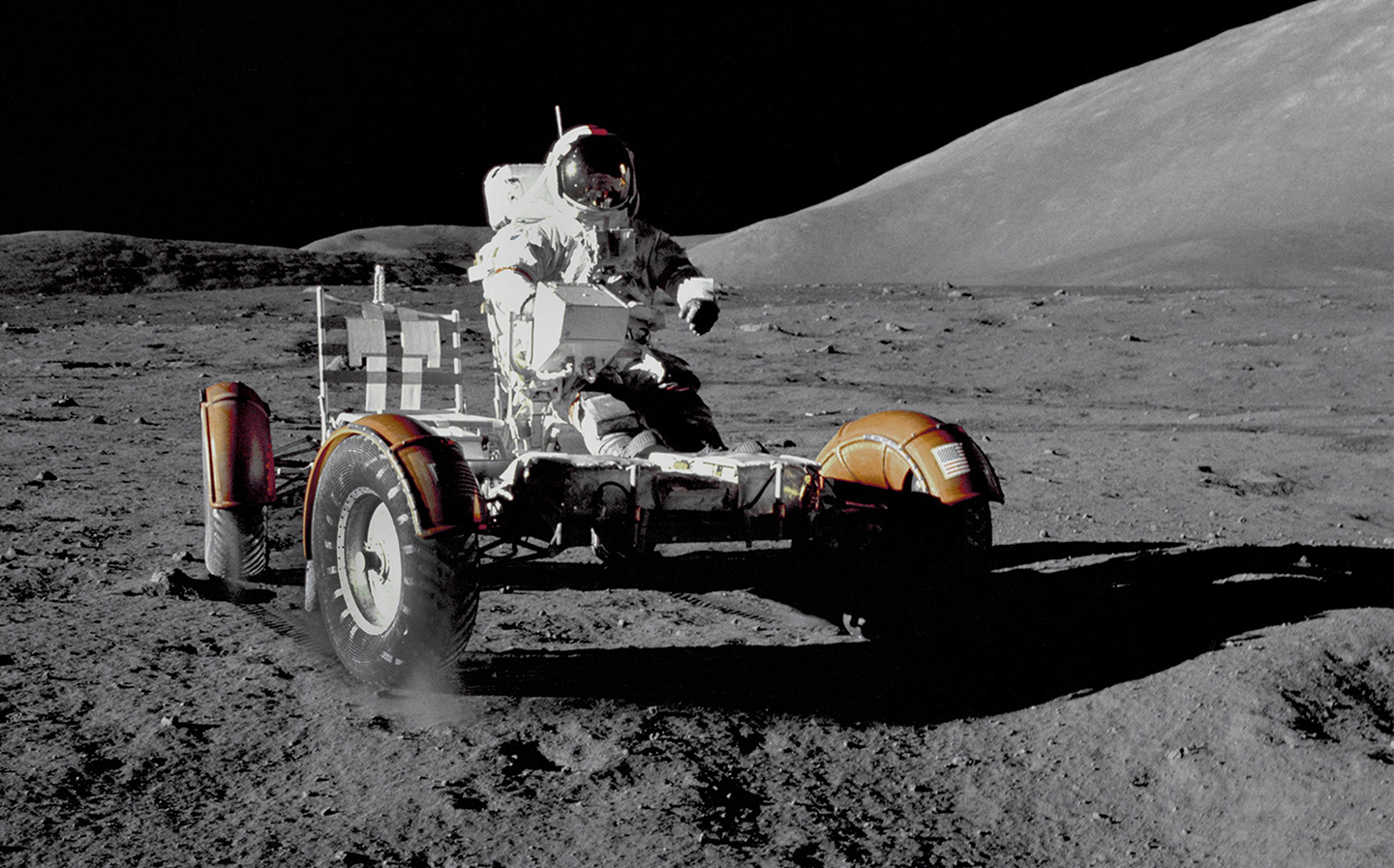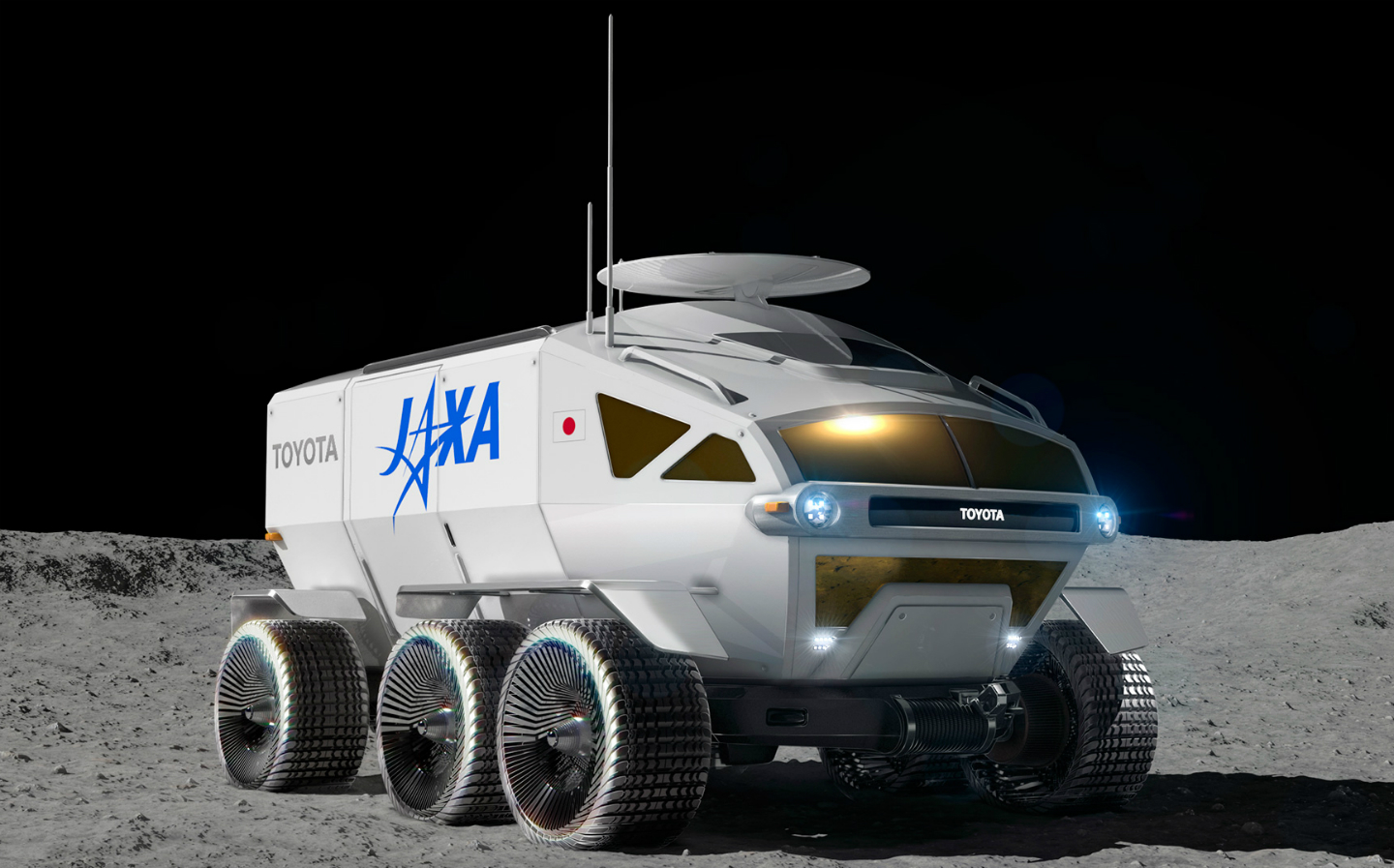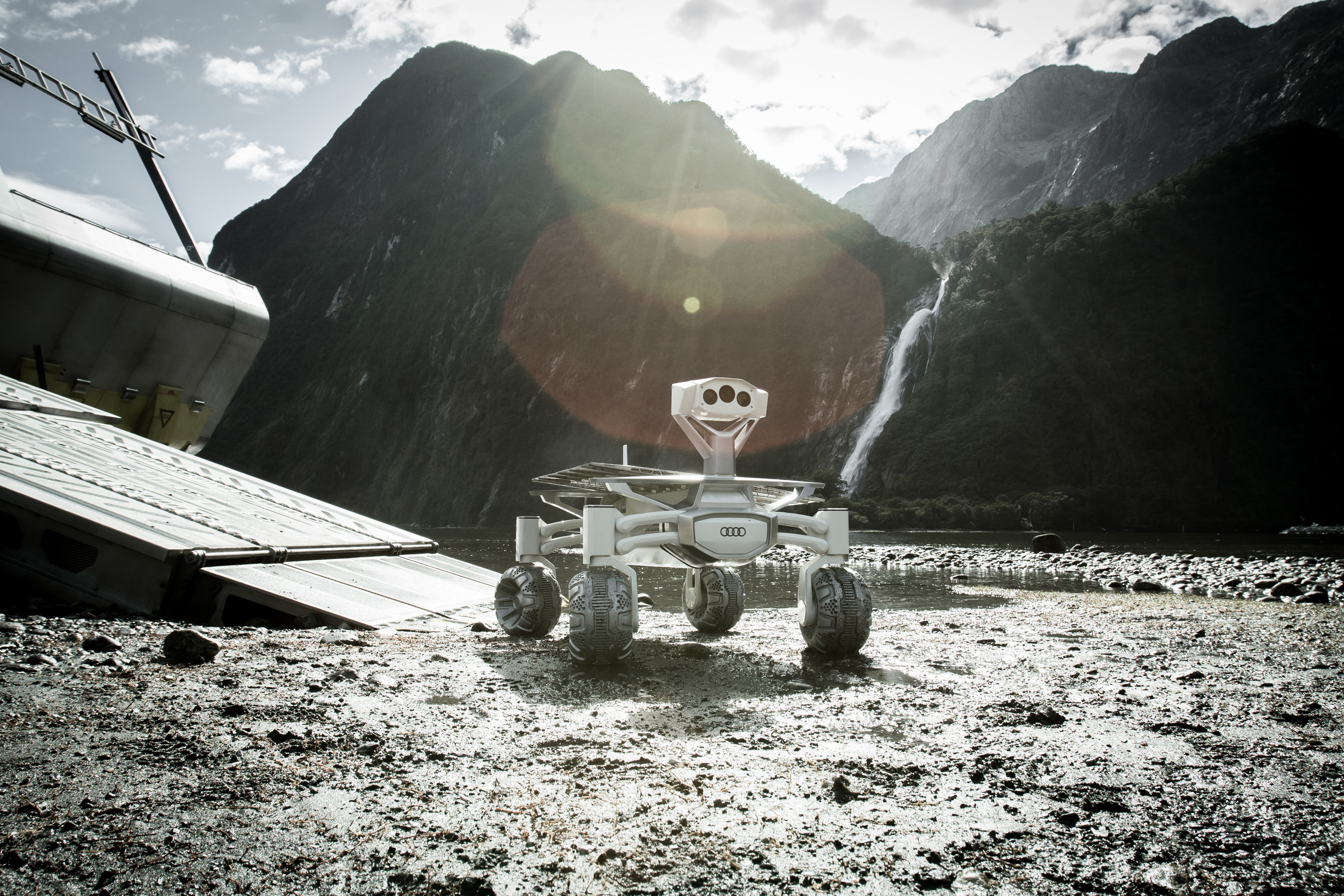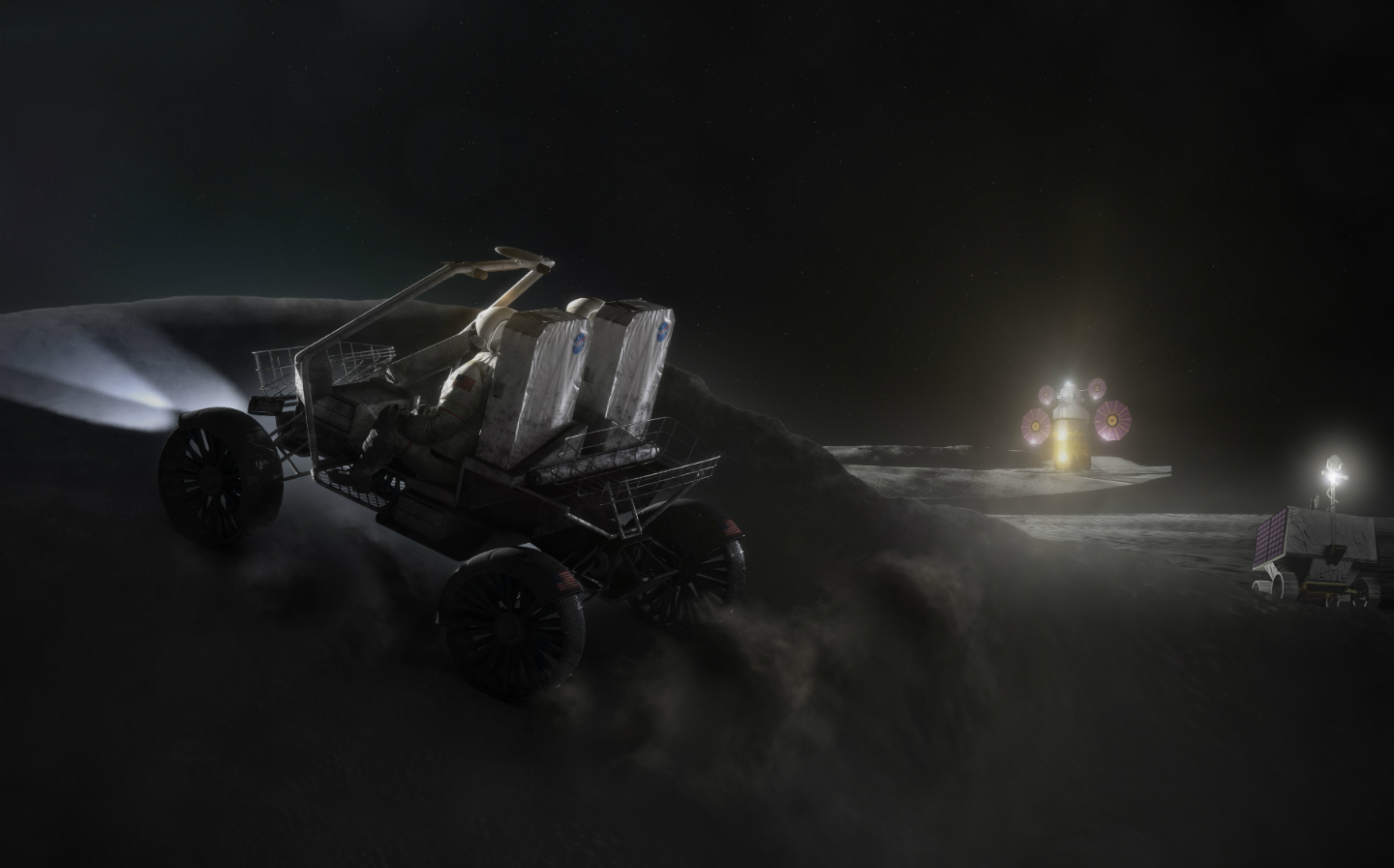NASA wants car makers to help it build the next lunar rover
Return to the moon will result in an out of this world driving experience
AMERICAN space agency NASA is gearing up for its first manned moon mission for more than 50 years — and it now wants car companies to help it design and build the next generation of lunar buggies.
Outlined in a new “request for information”, NASA wants US-based companies to submit proposals for a new Lunar Terrain Vehicle (LTV) that could be designed and developed in time for the planned Artemis moon missions, which could begin as early as 2024.
Car makers in particular appear to be high on the agenda for the space agency. NASA’s director of human lunar exploration programs Marshall Smith has explicitly said it wants “industry leaders in all-terrain vehicles [and] electric vehicles” to bring forward their lunar rover ideas, and hopes whatever technology is developed will go on to “spur innovations in electric vehicle energy storage and management”.
Even autonomous driving systems could find their way onto the next gen moon buggy, as NASA has said it’s investigating the possibility of using self-driving tech that allows the LTV to drive itself off the lander and follow pre-programmed routes that have been mapped out from mission control, or by the astronauts themselves.
The vehicle will need to withstand up to 127C in sunlight and endure the frigid -162C conditions of a lunar night
While NASA has confirmed it also wants to look into the “potential commercial applications” of the LTV’s features, the moon buggy will need to go far beyond the capabilities of road cars on planet Earth. In order to survive on the lunar surface, NASA says the vehicle will need to have “extreme environment tyres”; explaining the inclines of 15 degrees encountered by the astronauts on the Apollo 16 moon mission in 1972 “should serve as a baseline” for the capabilities of the LTV.
The vehicle will need to be fairly compact, too: because the vehicle needs to fit inside the lunar lander module, it can’t be any longer than 3.2m — 37cm shorter than a Fiat 500 and 25cm shorter than a Toyota Aygo.
Despite the size restrictions, the LTV will need to have enough room inside for two fully-suited astronauts, and have a carrying capacity of around 500kg (the estimated weight of two astronauts in their space suits and all the equipment they’d need for their exploration missions).
Perhaps most importantly, the vehicle will need to withstand the extreme temperatures on the lunar surface, which NASA says can reach highs of up to 127C in sunlight. Because NASA is also considering exploring the south pole of the moon, the LTV will also need to endure the frigid -162C conditions of a “lunar night” that can last up to 100 hours.
Any companies interested in submitting their lunar rover proposals will need to turn them around fairly soon, as NASA has given interested parties until midday Eastern Standard Time on February 26, 2020 to send the plans their way.
This, of course, isn’t the first time the United States’ space agency has had car makers lend a helping hand with its lunar vehicle programmes. The 0.25bhp electric motors that powered the Lunar Roving Vehicle moon buggies used on the Apollo 15, Apollo 16 and Apollo 17 missions were developed by the electronics division of the industrial giant General Motors, which owns famous car makers such as Buick, Cadillac and Chevrolet.

The image above shows Apollo 17 commander Eugene A. Cernan riding the LVR during his first space walk at the Taurus-Littrow landing site on December 12, 1972. Cernan was the last man to walk on the Moon.

Car companies outside of America have expressed an interest in sending cars to the moon, too. In July 2019, Toyota announced it was collaborating with the Japanese space agency on a hydrogen fuel cell-powered lunar rover, which is intended to be completed in time for Japan’s first manned moon mission in 2029.

And car makers have a history of developing lunar rovers for the silver screen, a notable recent example being the Audi lunar quattro, which was created for Ridley Scott’s 2017 sci-fi blockbuster Alien: Covenant.
More traditional lunar rovers hit the big screen recently in movie Ad Astra, though in never-before-seen style as Brad Pitt is forced to flee bandits in a spectacular sequence depicting the first moon-based car chase.
Tweet to @J_S_Allen Follow @J_S_Allen
Elon Musk and SpaceX successfully launch Tesla Roadster and ‘Starman’ driver to Mars





